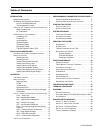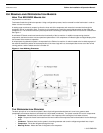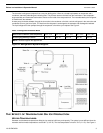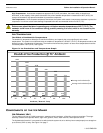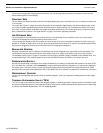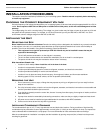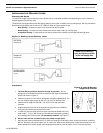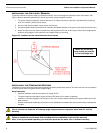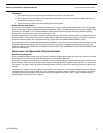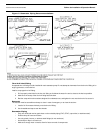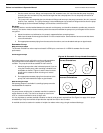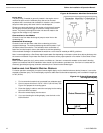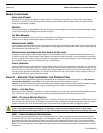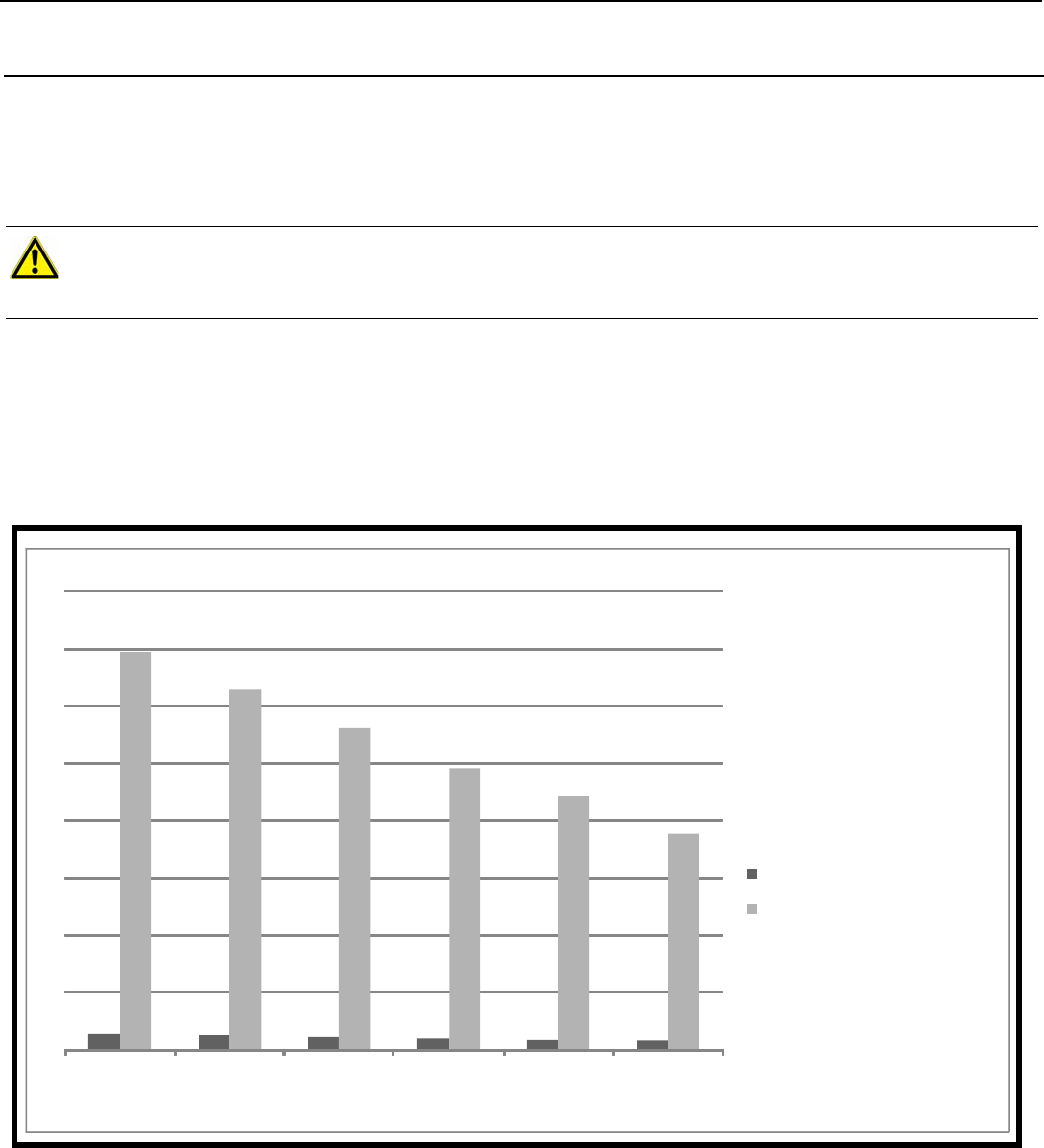
INTRODUCTION Eskimo Ice Installation & Operation Manual
4 L-3152 ENGLISH
High Temperatures - As seawater temperatures approach 90°F (32°C) and above, the water’s ability to absorb heat
diminishes, so the capacity of the system decreases. Also, when seawater temperature increases above 90°F (32°C), the
system could sustain a high-pressure shutdown to protect the compressor.
Low Temperatures - As the seawater temperature decreases, the system could sustain a low-pressure shutdown to protect the
compressor. It could also cause freeze damage if operated below the recommended minimum of 45°F (7°C).
AIR TEMPERATURE
The Effect of Ambient Air Temperature
The ambient air temperature affects the ice machine’s efficiency and capacity, but not as significantly as the water
temperatures. The system is most efficient when the ambient air temperature is 55-80°F (13-27°C). At temperatures above and
below this range, ice production will decrease. The machine should never be placed in an area where temperatures would be
consistently above 130°F (54°C). See Figure 3.
Figure 3: Ice Production and Temperature Graph
COMPONENTS OF THE ICE MAKER
ICE-MAKING UNIT
The ice-making unit has an R-404A compressor, seawater-cooled condenser, a filter/drier, and an accumulator. The auger
assembly contains the evaporator barrel, auger rotor, gearbox, motor, water reservoir, and expansion device.
The freshwater delivered to it is converted to ice which exits the system via an ice-delivery hose routed properly to a storage box
up to 50 feet (15.25 m) away. See Figure 4 on page 7.
CAUTION
Extreme care should be taken in operating any unit below seawater temperatures of 45°F (7.2°C). The
seawater could freeze in the condenser tubing, possibly causing it to burst, which is not covered by the
warranty.
58
52.5
47
41
37
31.4
1392
1260
1128
984
888
754
50° 60° 70° 80° 90° 100°
Condenser/ReservoirTemp
Pounds ofIceProduction@73° Ambient
AverageIceProduction/hr
AverageIceProduction/24h r




